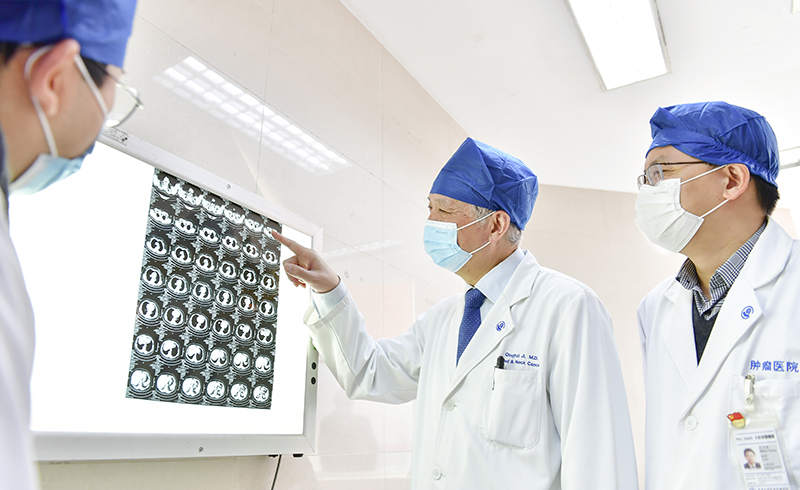NEWSROOM
-
reported by Department of Head &Neck Surgery, Fudan University Shanghai Cancer Center

“Head & Neck”, the official journal of International Federation of Head and Neck Oncologic Societies (IFHNOS) and International Academy of Oral Oncology, has published a novel method to reconstruct recurrent laryngeal nerve reported by Department of Head &Neck Surgery, Fudan University Shanghai Cancer Center as the cover article (2022;44:805–809).
Recurrent laryngeal nerve (RLN) is an important nerve which branches off from the vagus, ascends in the groove between the trachea and the esophagus, passes between the thyroid and cricoid cartilage, and enters the larynx to control vocal cord movement. Unilateral RLN paralysis leads to hoarseness and cough induced by drinking, while bilateral RLN paralysis may cause dyspnea, dysphonia and dysphagia. RLN is a delicate anatomic construction that needs to be particularly focused and protected during Surgery. The Department of Head &Neck Surgery, Fudan University Shanghai Cancer Center has accumulated rich and achieved quite satisfying effect of RLN protection during thyroid surgery using RLN visualization technique and intraoperative neuromonitoring (IONM). However, in cases of advanced thyroid and esophagus cancer, tumor may grow aggressively and affect RLN by direct invasion or lymph node metastasis. To achieve R0 resection of the tumor, surgeons sometimes have to perform segmental resection of RLN. Reconstruction of RLN has always been a difficulty due to its importance.
There are three traditional ways to repair RLN: direct end-to-end anastomosis (can only apply to short RLN segementectomy because of high tension); free nerve grafting (needs two anastomoses, causing injury of another nerve and long grafting compromises outcome); and nerve transfer using phrenic nerve or ansa cervicalis (causing injury of another motor nerve, brain function area needs further learning). These existing methods unfortunately can’t promise satisfying outcome. Professor Qing-hai Ji and Professor Yu-Long Wang from Department of Head and Neck Surgery, Fudan University Shanghai Cancer Center have concluded from their large abundant of thyroid surgeries and innovatively designed a novel way of RLN reconstruction. They dissect and identify the proximal end of right RLN posterior to the common carotid artery in pursuit of its origin: the vagal laryngeal branch. The recurrent segment (retrosubclavian part) of the nerve is liberated and repositioned superior to the subclavian artery and posterior to CCA, deliberately making RLN “nonrecurrent” to meet the two stumps. By unwinding and repositioning the recurrent part of the right RLN, they effectively procure adequate length of proximal stump for a one time, self and tension-free anastomosis. More than 20 surgeries have been done using this method with good outcomes. A video of the procedure has been published also on the same issue homepage of “Head & Neck”(http://onlinelibrary.wiley.com/journal/10.1002/(ISSN)1097-0347). In the process of submission, the method was spoken highly by the editors. Professors from cancer hospitals cross china also make great compliments on the method, regarding it as one of the best way to repair segementectomy of right RLN.
Department of Head and Neck, Fudan University Shanghai Cancer Center has a tradition of surgical technique innovation. Professor Hong-Shi Wang, the founder of the department, designed submental myocutaneous flap to reconstruct defect after head and neck surgery and was given a National Science and Technology Progress Award. Under the leadership of Professor Qing-Hai Ji and Department director Yu Wang, the Head and Neck Department has devoted in the adoption of multiple disciplinary team, promotion of combined therapy, and innovation of technique, achieving series accomplishments in recent years. The whole operation volume of 2021 is 7600, ranking first of china. The Head and Neck Department has several own-account research and development in thyroid treatment theory and surgical techniques, getting all the good reputations from peers all over the world.

